10 Popular Museums worth Visiting on Your China Tour
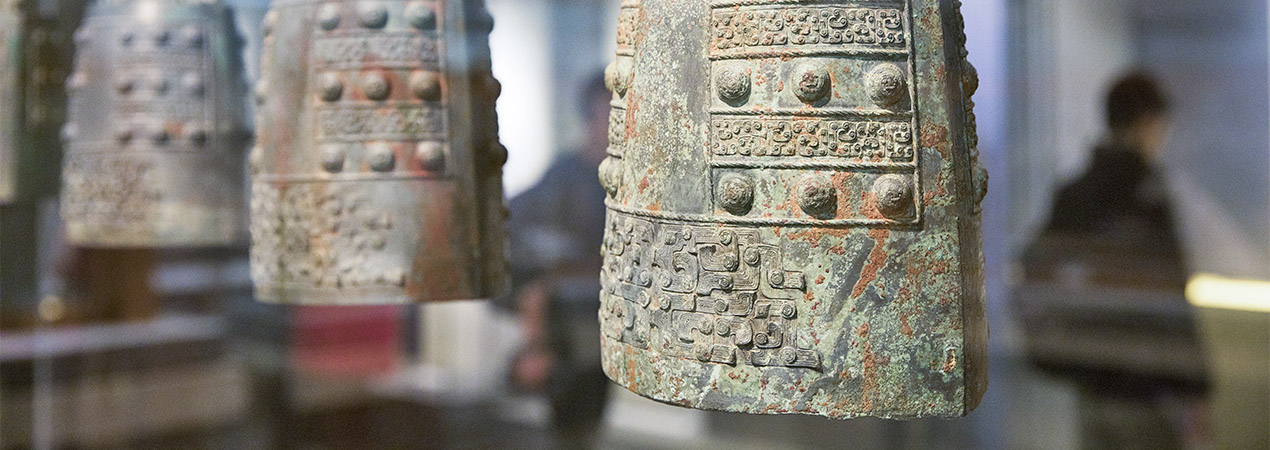
A Museum is a place where people can enjoy profound history and dig through local culture to explore a new perspective on the world. Here you will find some of the finest collections in the world, special exhibits and Chinese masterpieces that can bring you into the land of miracles. This article lists the most popular museums in different capitals of China, and which you may easily visit on your tour.
China's Top 10 Museums
1. National Museum of China – the world’s top popular museum
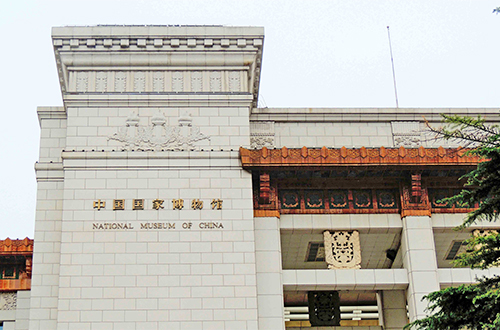
Located to the east of Tiananmen Square and in symmetry with the Great Hall of the People, the National Museum of China is the supreme palace of history, art and culture, research and public education in China. The 5 storied building accommodates about 48 exhibition halls, a huge lecture hall, a theatre, a library and public leisure space.
This museum houses more than 1.4 million collected items, covering archaeological discoveries including ancient artifacts, bronze ware, Buddhist statues, jade ware, porcelain, rare and antiquarian books, and objects of Chinese revolutionary and modern history such as national gifts, the first national flag of China, and the Announcement of the Interim Government of China Soviet Republic. The National Museum of China was the world’s most-visited museum in 2016 in an annual report on global attractions.
Location: No. 16 Dong Chang'an Street, Dongcheng District, Beijing
Opening Time: 09:00 – 17:00 (Tuesday to Sunday; last entry at 16:00)
Why go: The National Museum of China is the largest museum in a single building area in China and the world’s top popular museum.
Recommended Visiting: 3-4 hrs
Photography: Check the signs inside, usually allowed at permanent exhibitions.
Top Treasures in the Museum
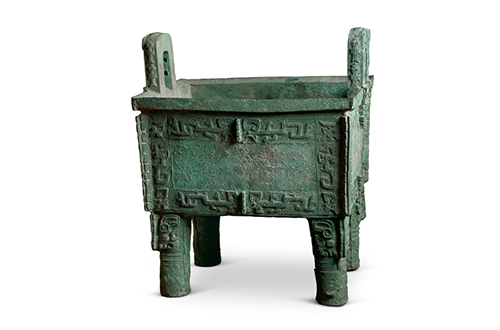
Houmuwu Square Cauldron
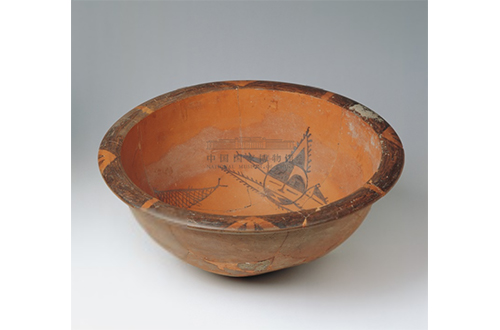
Painted Pottery Basin with Fish and Human Face Design
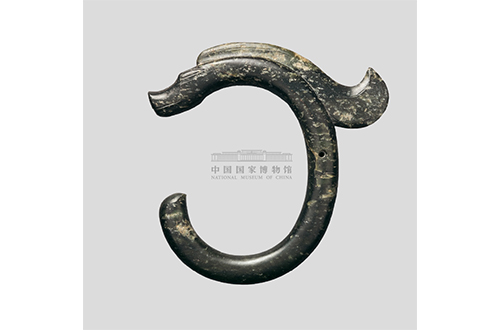
Jade Dragon
Source from National Museum of China
Houmuwu Square Cauldron (Late Shang 1300-1046 BCE)
The Houmuwu Square Cauldron is currently known as the heaviest bronze ware in ancient China, and is a huge, majestic vessel about 832.84kg in weight. It fully shows the complicated technique in making bronze and the highly developed bronze culture in the late Shang Dynasty.
Painted Pottery Basin with Fish and Human Face Design (Neolithic, Yangshao Culture)
The red painted pottery basin is colored with intermittent black ribbons painted on the edge of mouth, and there are two sets of symmetrical human-mask-fish patterns. This simple, dynamic pattern is full of fantasy. The ancient Banpo people lived in the Yellow River Valley, east of Xi’an, Shanxi Province from 4500-3750 BCE. They painted fish patterns and net patterns on many pots. This would be related to totem worship and economic life at that time. This type of picture is generally regarded as a symbol of the wizard asking the fish-god to possess his body, calling for the soul of a dead child, and praying for good luck.
Jade Dragon (Neolithic, Hongshan Culture)
The jade dragon is carved from dark green Xiuyan jade. The body is smooth and clean, and the curl is shaped like a hook. This jade dragon is one of the earlier images of dragons that has been discovered in China, and has a very high artistic value.
2. The Palace Museum – the largest wooden palace complex
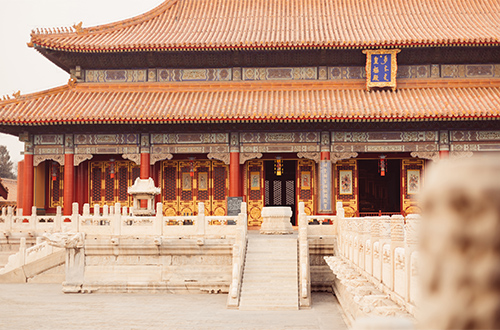
Established in 1925, the Palace Museum is situated in the heart of Beijing, and is also known as the Forbidden City. The palace consists of many separate halls and courtyards, more than 8600 houses, the various architectural designs themselves are historical relics. A lot of the buildings in the museum are presented as they would have appeared in antique times.
The main buildings of the museum include the Hall of Supreme Harmony, one of the largest wooden buildings in China. The Hall of Preserving Harmony displays a fine collection of works of art, many from the imperial treasures. Other areas of the palace contain displays of bronzes, sculptures, pottery and porcelain, jade, and silks. Some of treasures are exhibited in the northeast corner of the palace, known as the Palace of Longevity. It is also called the Treasure Gallery and includes priceless objects of precious metals and jewels and some examples from the imperial tableware.
Location: No. 4 Jingshanqian Street, Dongcheng District, Beijing
Opening Time: 09:00 – 17:00 (Tuesday to Sunday; last entry at 16:00)
Why go: The palace museum includes not only the imperial palace complex but also a collection of about 1.8 million items. The collections originate from the Qing imperial collection and include ceramics, paintings, calligraphy, bronzes, timepieces, jades, palace paraphernalia, ancient books, and historical documents. Additionally, there are colored earthenware items from prehistoric times, bronzes and jades from the Shang and Zhou Dynasties, pottery tomb figurines from the Han Dynasty, stone sculptures from the Northern and Southern Dynasties, and tri-color pottery from the Tang Dynasty.
Recommended Visiting: 2hrs-1 day
Photography: No camera flash and tripod when taking photos in exhibition halls.
Top Treasures in the Museum
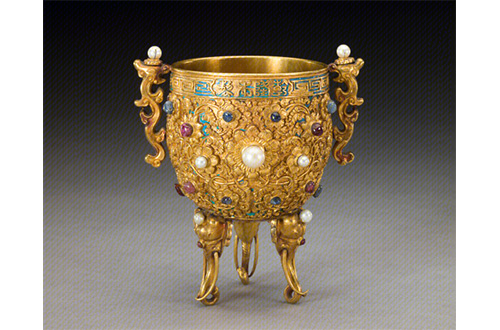
Eternal Territorial Integrity
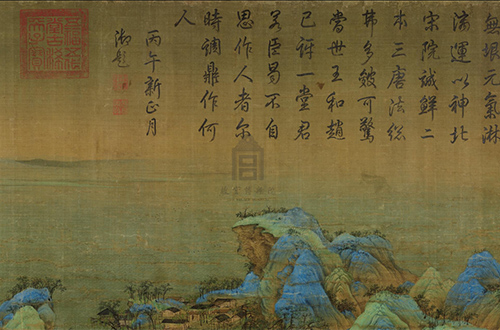
A Panorama of Rivers and Mountains
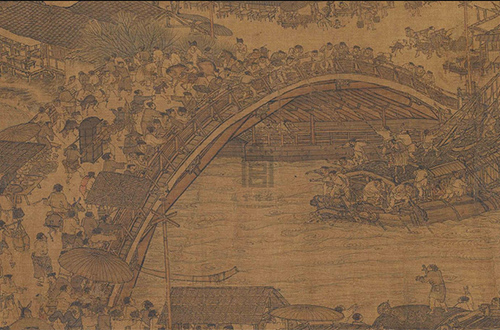
Along the River During the Qingming Festival
Source from The Palace Museum
The “Eternal Territorial Integrity” Gold Cup
This gold cup, in the shape of a round tripod, has rosette designs covering the entire outside surface with inlaid pearls, rubies, sapphires and other jewels. The two handles are shaped like dragons with pearls on their heads. The three legs are in the shape of elephant heads with small ears, long tusks and curled trunks.
A Panorama of Rivers and Mountains “A Panorama of Rivers and Mountains” by Wang Ximeng is the archetypal work of the blue-green shanshui style and stands as the most representable and historically marked piece.
Along the River During the Qingming Festival
“Along the River During the Qingming Festival” is a depiction of a stroll painted in the early 12th century. Because of its fragility, the scroll is seldom displayed. This painting is considered to be the most renowned work among all Chinese paintings, and it has been called “China’s Mona Lisa.” It captures the daily life of people and geometrically accurate images of bridges, wine shops, sedan chairs and boats beautifully juxtaposed with flowing lines for the depiction of mountains and other natural scenery.
Great Jade Dragon
The large, curled dragon of pale green jade forms a reversed C, its long snout with two nostrils curves slightly upward. It is a representative work of the early tribal art of the Hongshan Culture in the Neolithic Age (8000-2000 BCE).
3. Shaanxi History Museum – the first large modern national museum
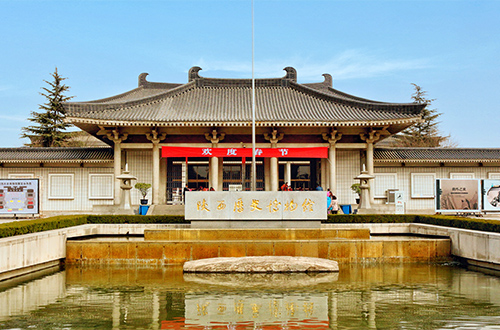
Xi’an, a significant city in the history of China, was the cultural center and capital of 13 dynasties. Located in the southern suburbs of Xi’an, the Shaanxi History Museum provides a time-traveling tour of the city. The museum covers an area of over 70,000 square meters, and is itself an example of a modern building echoing the classic Tang Dynasty architecture. This museum has several major exhibition halls, including Permanent Exhibition, Latest Exhibition, and Topic Exhibition. The permanent exhibition halls consist of three large display halls arranged in chronological order. The first hall exhibits objects from the Stone Age to the Qin Dynasty (221-206 BCE). The second hall displays the reign of the Han Dynasty from 206 BCE to 589 CE. The third hall has collections from the Sui Dynasty (581-618 CE) to the Qing Dynasty (1636-1911 CE). The Latest Exhibition hall is dedicated to contemporary art, and the Topic Exhibition shows a valuable collection of the Tang Dynasty treasures and mural paintings.
Location: No.91 East Xiaozhai Road, Yanta District, Xian
Opening Time: 09:00 – 17:00 (Tuesday to Sunday; last entry at 16:00)
Why go: Here visitors can learn about Xi’an’s 5000-year history. There are 1,717,950 cultural relics in the Shaanxi History Museum, for example bronze ware from the Western Zhou Dynasty, terracotta figures, and gold and silverware.
Recommended Visiting: 2-3hrs
Photography: flash photography is prohibited in the exhibition hall, and no photos are allowed in the mural paintings exhibition.
Top Treasures in the Museum
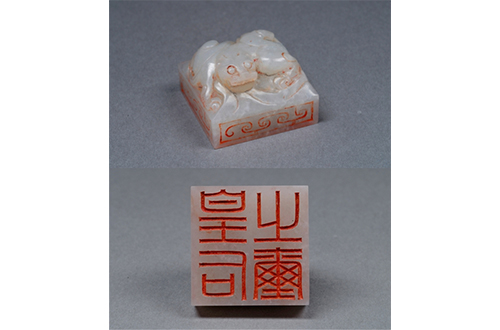
The Empress’s Jade Seal
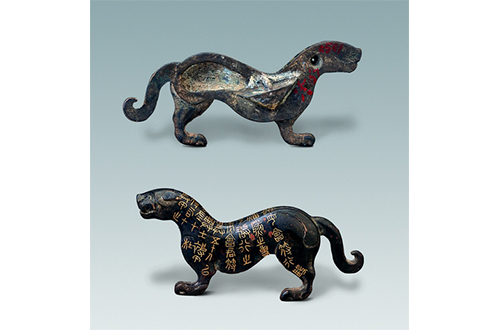
Bronze Tiger-shaped Tally
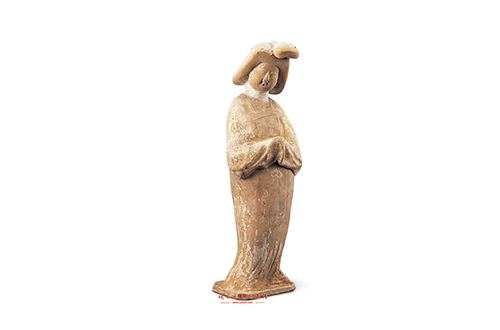
Tang Tri-color Glazed Female Figurine
Source from Shaanxi History Museum
The Empress’s Jade Seal Inscribed with Characters “Huang Hou Zhi Xi (皇后之玺)”
This seal was made of Hetian jade from the Xinjiang Uygur Autonomous Region. With a monster-shaped protrusion as a knob, the seal’s bottom was inscribed with four traditional Chinese characters “皇后之玺”, which means it is an empress’s seal. The jade seal can be dated from the West Han Dynasty, and is one of the most important seals which has ever been found.
Bronze Tiger-shaped Tally in Warring States Period
The tiger tally was designed to be split in half. The Emperor held the right half, and the left half was held by a general at Du county. It was used exclusively to mobilize armies in ancient China. When the two parts fitted together, a troop unit of more than 50 soldiers could be dispatched.
Tang Tri-color Glazed Female Figurine
Tri-color means that there are three main colors on the pottery, such as yellow, green and auburn. Tri-color pottery and figurines were buried in tombs. The female figurine has plump cheeks, long eyebrows and eyes, a small mouth like a cherry, and is in a long, embroidered Tang-style dress, with a vivid posture. These kinds of artworks flourished during the Tang Dynasty.
4. Henan Museum – a new Internet celebrity museum
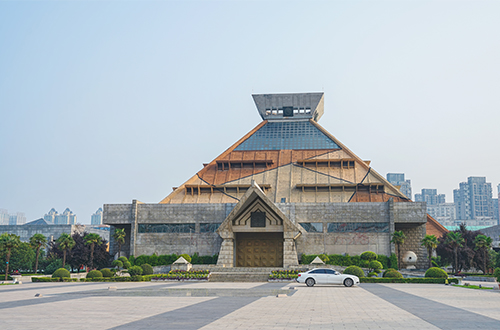
Henan Museum covers an area of more than 100,000 square meters, and the building combines traditional architecture and new technology. The permanent exhibitions have four themed halls display historical relics from prehistoric times to the Ming and the Qing Dynasties, including Chu Bronze Art, Henan ancient jade, and the Ming and the Qing treasures.
Henan Museum has launched a series of cultural and creative productions selling at the shop. The most popular is the archaeological blind boxes. Each box contains a brush, a miniature Luoyang shovel, a traditional tool used for excavation work, and “micro cultural relics” wrapped by the soil, which could be a small replica bronze, tiger-shaped tally, and 12 Chinese zodiac signs. Customers can experience the joy of digging up treasures and learn a lot of cultural knowledge by uncovering the mystery of the boxes.
In addition, the dance show “Night Banquet in Palace Tang Dynasty” was premiered at the 2021 Henan Spring Festival Gala. The show has distinctive figures of Tang Dynasty musical and dance figurines in the Henan Museum. It made the Henan Museum become a newly discovered web celebrity. The ancient coins chocolate and blind boxes of painted pottery figurines respectively ranked the second and third in sales.
Location: No. 8 Agricultural Road, Jinshui District, Zhengzhou City, Henan Province
Opening Time: 09:00 – 17:00 (Tuesday to Sunday; last entry at 16:00)
Why go: Henan Museum is one of the oldest museums of China and a first national museum contrasted by central and local government. It has collected more than 5000 pieces, among which are bronze wares, jade stone tools, ceramics and stone carvings – those are the most distinctive ones. Visitors can not only observe the collections, but can also purchase some small replica souvenirs.
Recommended Visiting: 2-4 hrs
Photography: photography is permitted in both the permanent and special exhibitions, but no tripods and flash photography.
Top Treasures in the Museum
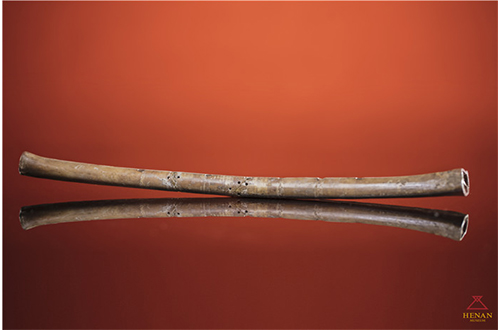
Jiahu Bone Flute
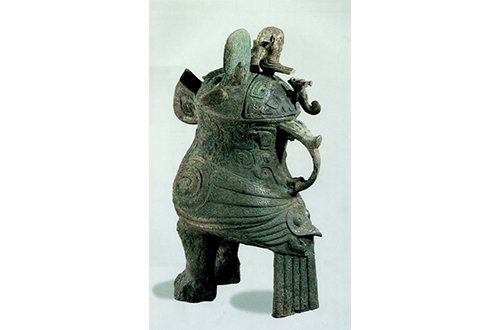
"Fu Hao" Owl-shaped Bronze Zun
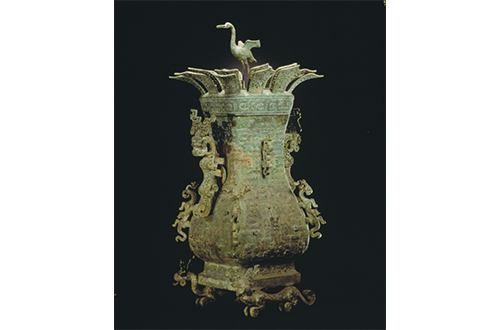
The Lotus and Crane Square Ewer
Source from Henan Museum
Jiahu Bone Flute
The bone flute was unearthed from the Jiahu Site, Wuyang County, Henan Province, in 1987, thus its name the Jiahu bone flute. Measuring about 9.29 inches, the flute was made from a wing bone of the red-crowned crane 8000 years ago, with seven finger holes. It is the earliest instrument object in China dated from Neolithic Age.
"Fu Hao" Owl-shaped Bronze Zun
The Zun was excavated at the Fu Hao tomb of Yin ruins. A ‘Zun’ is a wine vessel and Fu Hao was the wife of King Wu Ding of the Shang Dynasty. It is evidence of the highly developed bronze civilization of the Shang Dynasty (1600-1046 BCE).
The Lotus and Crane Square Ewer in the Spring and Autumn Period (770-475 BCE)
This ewer (wide-mouthed jug) belonged to the King of the Zheng State. The vivid crane on the top of the ewer, appears to be spreading its wings ready to fly. The body of the ewer is covered with elaborate decoration.
5. Nanjing Museum – a dynamic museum combined with art gallery and activities
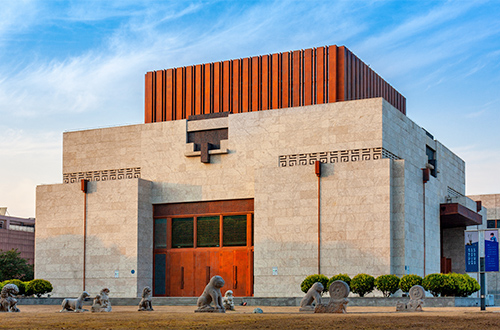
Nanjing was the ancient capital of the six dynasties and that makes the museum a national first-class museum. The main building was designed by a famous Chinese architect, Liang Sicheng, in the 1930s. As the second largest museum in China, there are over 420,000 valuable exhibits. Now the Nanjing Museum forms a feature of five distinctive galleries of the Republic of China, Intangible Cultural Heritage, Arts, Special Exhibitions, and History. Besides the untouchable cultural relics, in the Intangible Cultural Heritage set are the Jiang Su Intangible Cultural Heritage Hall, Master Works, and Tea House. Visitors can experience Chinese traditional music, drama, art, and medicine, and watch a handicraft performance. In the Tea House, while enjoying the local drama, visitors can taste some famous tea in the Southern area of China.
Location: No.321 Zhongshan East Rd, Xuanwu District, Nanjing City, Jiangsu Province
Opening Time: 09:00 – 17:00 (Tuesday to Sunday; last entry at 16:00)
Why go: Relics from the Paleolithic Age to the contemporary era covers stoneware, crockery, bronze ware, jade, porcelain, painting and calligraphy, embroidery, folklore and art articles, in addition to the dynamic show of popular folk activities, vivid traditional handicraft and local drama performance.
Recommended Visiting: 2-4 hrs
Photography: professional equipment such as photographic flashes and tripods are not allowed in exhibition halls.
Top Treasures in the Museum
Jade Suit with Gold Strings
The jade suit is a ceremonial suit made of pieces of jade for a royal member to protect their bodies in the afterlife, and is from the Han Dynasty (202 BCE-220 CE). This jade burial suit was for Liu Fei, the ruler of the Jiangdu Kingdom in China. Depending on the body size, a complete suit could comprise up to 2500 jade pieces in rectangular, triangular, round, half-moon and fan shapes. Being sewn in gold, silver, and copper threads denotes the wearer’s status.
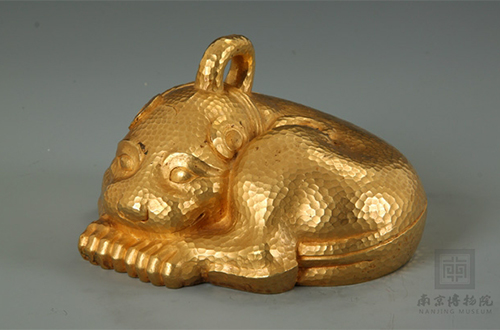
Gold Beast in the West Han Dynasty
Gold Cicada on a Jade Leaf
The ‘Gold cicada on a jade leaf’ is a funerary object and was discovered on an aristocratic lady’s hairpin in a tomb dated from the Ming Dynasty (1368-1644 CE). The gold cicada was carved to look very lifelike, and the leaf made of Hetian jade was polished as smooth and translucent as glass with the clearly visible veins of the leaf. The imagery of a cicada on a leaf is a great compliment to women in ancient China.
Gold Beast in the West Han Dynasty (202 BCE-8 CE)
The ‘Gold Beast’ is a golden recumbent leopard, with its head on its front feet, tail pressed between its thighs and a collar on its neck. The bottom is hollow and indented and shows in intaglio two characters in official script.
6. Zhejiang Provincial Museum – a large museum connected to West Lake
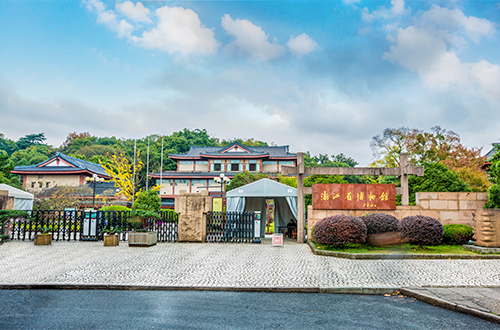
Zhejiang Provincial Museum consists of the Wulin Branch and the Gushan Branch, and houses more than 100,000 items of cultural heritage. Among them are precious items with distinct regional features and significant academic value, such as the pottery, lacquer ware, wooden ware, bone tools and ivory artifacts of Hemudu culture (5500 -3300 BCE) during the Neolithic era, the jade ware of the Liangzhu culture (3400-2250BCE), the bronzes and stoneware of the Kingdom of Yue, the celadon of the Yue, Longquan and other kilns, mirrors made in Huiji and Huzhou, gold and silver coins of the Southern Song dynasty, and paintings and calligraphic works by Zhejiang artists of the Ming and the Qing dynasties.
Location: No.321 Zhongshan East Rd, Xuanwu District, Nanjing City, Jiangsu Province
Opening Time: 09:00 – 17:00 (Tuesday to Sunday; last entry at 16:00)
Why go: The historical objects represent local varieties of styles from various cultures.
Recommended Visiting: 2-4 hrs
Photography: photography is permitted but no tripods and flash photography.
Top Treasures in the Museum
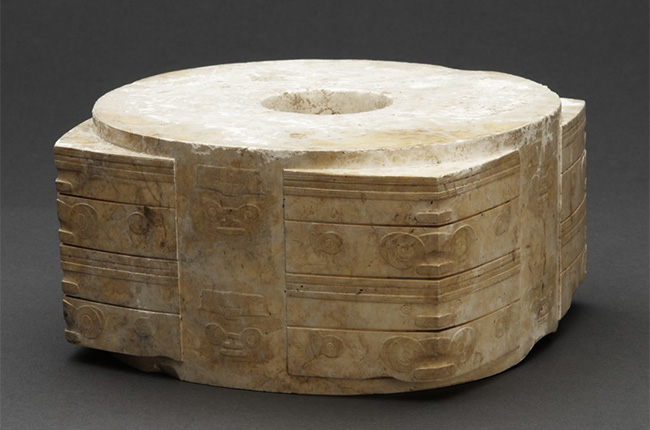
Jade Cong
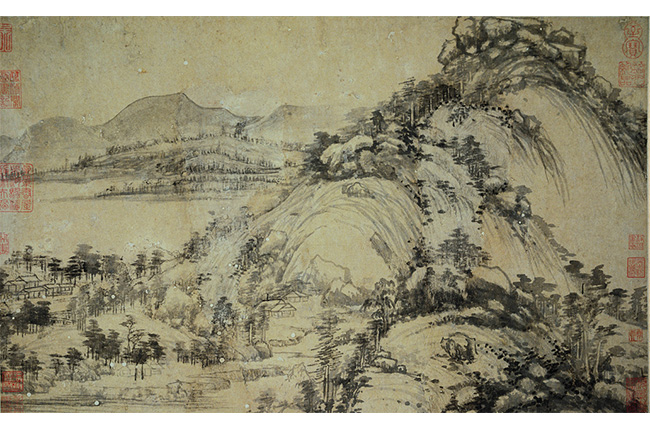
Dwelling in Fuchun Mountains
Souce from Zhejiang Provincial Museum
Jade Cong
The Cong is one of the types of jade artifact of the Liangzhu culture around Lake Tai in Jiangsu Province. It is shaped as a square hollow tube with a circular inner part, and lines and circles forming human, animal, and monster faces cover each corner.
Originally, the Cong was round and short, but it came to be narrow and tall later. The function and meaning are completely unknown. This Cong in the Museum is 6500g in weight and finely engraved and decorated, so it is called “the King of Cong”.
Dwelling in Fuchun Mountains (Remaining Mountain)
“Dwelling in the Fuchun Mountains” was painted by Huang Gongwang (1269-1354 CE) in the Yuan Dynasty (1271-1368 CE). Huang Gongwang was born in Changshu of Jiangsu Province. He began to paint at the age of 31 after he was released from prison after being accused of corruption as a minor official. According to popular folk stories, Huang and his friend Wuyong once went to visit the Fuchun River. He was immediately drawn to the beautiful landscape and decided to settle down near the river to paint a panorama of the landscape for his friend. Today, it is one of the ten top masterpieces of China’s paintings. The museum has collected this “Remaining Mountain”, and another part called the “Master Wuyong’s Scroll” is housed in the National Palace Museum in Taipei.
7. Shanghai Museum – famed for China’s Cultural Heritage
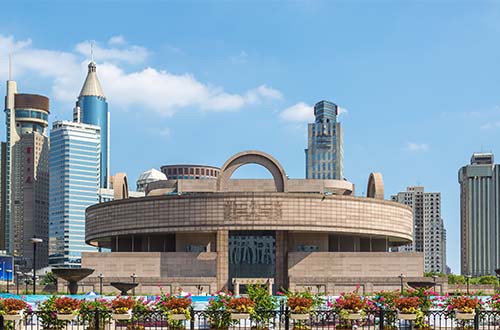
Shanghai Museum is a highly reputable museum housing a collection of over 1.02 million specimens through various dynasties, among which are 140,000 graded national treasures, including bronze, ceramics, calligraphy, painting, sculpture, seals, coins, jade, embroidery, lacquer ware, bamboo and wood carving, and arts and crafts of Chinese ethnic minorities. The museum has ten permanent galleries, four special donation showrooms and three temporary exhibition halls, providing visitors with a panoramic view of Chinese art history.
Location: No.201 Renmin Avenue, Huangpu District, Shanghai City
Opening Time: 09:00 – 17:00 (Tuesday to Sunday; last entry at 16:00)
Why go: Shanghai Museum houses several items of Chinese national importance, not only giving you an unparalleled view of Chinese art, but also an insight into modern China’s perception of its visual culture.
Recommended Visiting: 3-4 hrs
Photography: please pay attention to the sign at the hall entrance or inside the hall stating: Except where indicated by notice, photography is allowed in permanent and special temporary exhibitions in the museum for private and non-commercial use. Do not use flash photography, tripods, and selfie sticks.
Top Treasures in the Museum
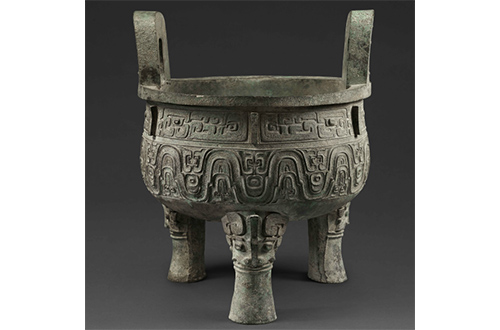
Da Ke Ding
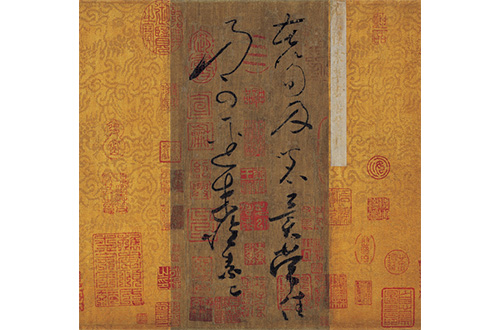
Ku Sun Tie
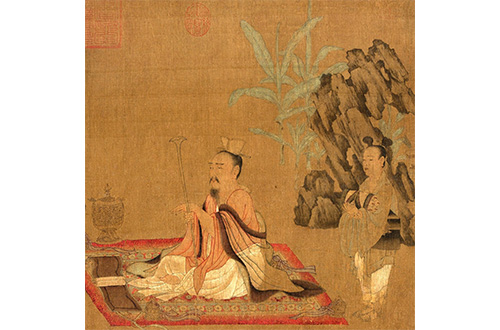
The painting of Gao Yi
Source from Shanghai Museum
Da Ke Ding
As an important bronze vessel used for ceremonies, the Ding served not only as a cooking and banquet container and to make sacrificial offerings to ancestors, but was also used to symbolize the social status and power of the owner. The ‘Da Ke Ding’ belonged to an elite official named Ke in the late Western Zhou Dynasty (1046-711 BCE).
Ku Sun Tie
‘Ku Sun Tie’ is one of the few extant authentic works written by Huai Su, a famous cursive calligrapher in the Tang Dynasty (618-907 CE). It is talking about shoots and tea, and has only fourteen characters. But the writer’s wonderful calligraphic skill and inner spirit can be shown vividly on the paper through the smooth and vigorous strokes.
The painting of Gao Yi
The painting of Gao Yi is the only existing authentic work of Sun Wei, a famed painter in Sichuan at the end of the Song Dynasty (960-1279 CE). This painting depicts four hermits of the “Zhu Lin Qi Xian”, seven hermits with superb talent enjoying their life in a bamboo forest during the Wei Jin Period (220-420 CE).
8. Sichuan Provincial Museum
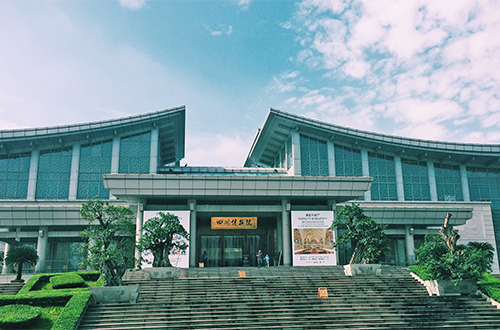
Situated in the city center, Sichuan Museum is the largest comprehensive museum in the Southwest. The museum has collected quantities of historical relics, among which are the bronze wares from the Ba-Shu era, works of the famous national painter Zhang Daqian, and bricks carved into portrait and potter sculptures from the Han Dynasty. Visitors will enjoy local profound history on these priceless items respectively kept in three floors.
Location: No. 251, South Huanhua Road, Qingyang District, Chengdu, Sichuan
Opening Time: 09:00 –21:00 in summer, 09:00-20:00 in winter (closed on every Monday)
Why go: the museum located in the Huanhuaxi Historical and Cultural Scenic Reserve enjoys the best site in the city center.
Recommended Visiting: 2-3 hrs
Photography: photography is permitted but no tripods and flash photography.
Top Treasures in the Museum
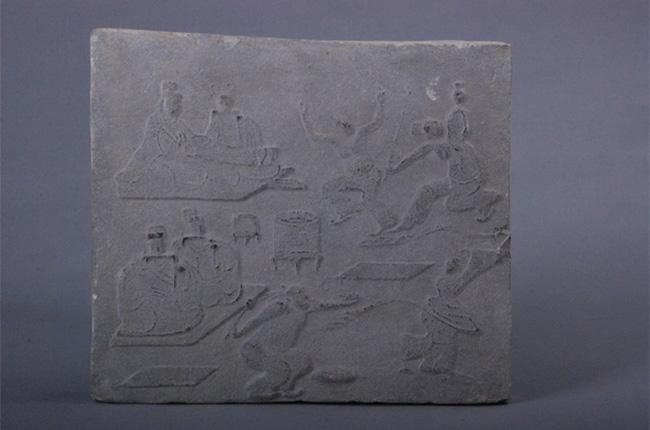
Stamped Bricks
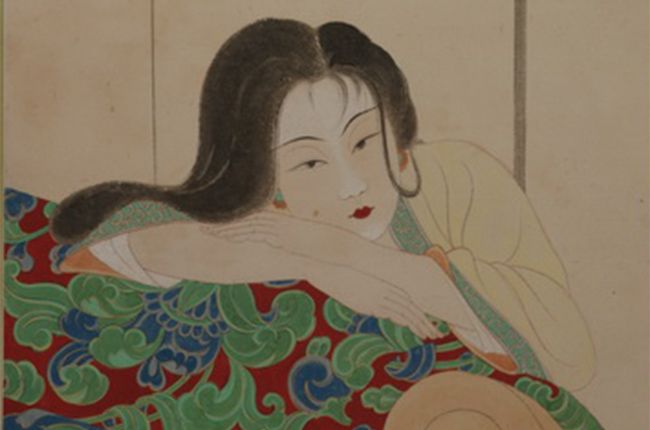
Zhuang Daqian Paintings
Source from Sichuan Provincial Museum
Stamped Bricks
Han dynasty tombs were decorated with stamped bricks carved in various patterns. They believed that they will have the afterlife as they depicted on the bricks. The stamped bricks show a happy afterlife where people could catch fish and birds, reap harvest, enjoy food, liquor, music and dance.
Thangka of Eight Trigrams
Thangka are Tibetan devotional meditative painted or embroidered scrolls. The Thangka of Eight Trigrams depicts a mystic diagram consisting of a magic square in the center, twelve zodiac animals surrounding it, and images of deities, stupas and forest animals around.
Zhuang Daqian Paintings
The museum set up an exhibition for Zhang Daqian’s paintings and calligraphy. Zhang Daqian has more than 200 paintings of Dunhuang Murals, among them the 183 pieces collected in the Sichuan Museum.
9. Hunan Museum
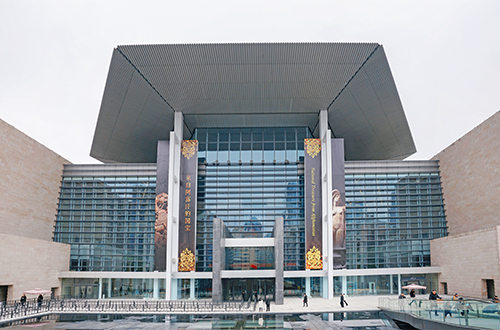
Hunan Museum is the largest historical museum of Hunan province. The museum houses over 180,000 artifacts that feature cultural relics excavated from the world-famous Mawangdui Tombs of the Han Dynasty (221 BCE-220 CE), bronze ware of the Shang and Zhou Dynasties, cultural relics of the State of Chu, and pottery and porcelain works from different periods of history. The four themed exhibitions cover the themes of bronze wares, ceramics, calligraphies and paintings, and crafts. The Hunan Museum has two permanent exhibitions and four themed exhibitions which are housed in the Changsha Mawangdui Han Dynasty Tombs and the Hunan-ese Exhibition of History and Culture.
Location: No.50 Dongfeng Rd, Kaifu District, Changsha City, Hunan Province
Opening Time: 09:00 –17:00 (closed on Mondays)
Why go: It not only presents the Chinese civilization but also serves as a unique window for people to understand the history of Hunan province.
Recommended Visiting: 2-3 hrs
Photography: No filming or video recording, flash photography, selfie sticks and tripods are also prohibited.
Top Treasures in the Museum
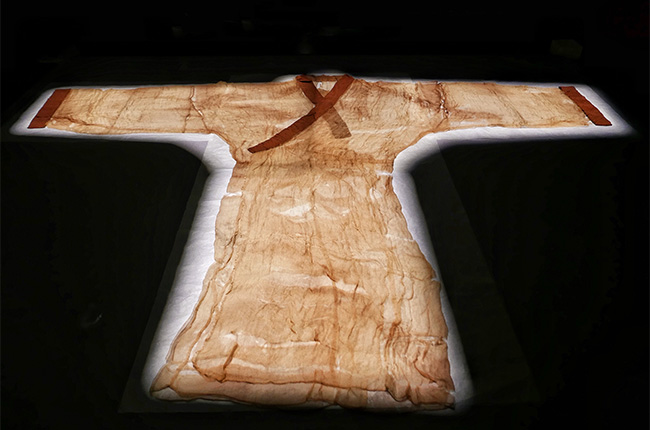
Plain Unlined Gauze Gown
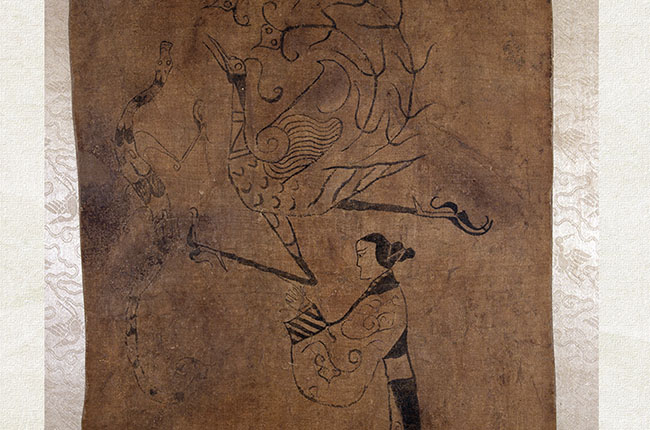
Silk Painting with Female Figure, Dragon and Phoenix Patterns
Source from Hunan Museum
The Mawangdui Han Dynasty Corpse
Xin Zhui, also known as Lady Dai or the Marquise of Dai, was the wife of Li Cang, the Marquis of Dai, during the Han Dynasty (206BCE-220CE). Her mummified body was so well-preserved that it was bound tightly in layers of silk cloth and covered with a wonderfully painted T-shaped tapestry depicting the netherworld, earth and heavens with Chinese mythological characters as well as Xin Zhui. Her body was soaked in an unknown liquid inside the coffin. Her skin was soft and moist, with muscles that allowed for her arms and legs to flex at the joints. All her organs and blood vessels were also intact. There was skin on her face, and her eyelashes and nose hair still exist. Her body and belongings have allowed occasional international exhibits, and is commonly known as the “Oriental Sleeping Beauty”.
Plain Unlined Gauze Gown
The clothes favored by Xin Zhui were stored in a bamboo box in the western compartment of the outer coffin. The clothes are described as “thin as cicada wings and light as smoke”. According to the measurements, the gauze weighs only about 48g.
Silk Painting with Female Figure, Dragon and Phoenix Patterns
Excavated from the Tomb of Chu State during the Warring States, Silk Painting with Female Figure, Dragon and Phoenix Patterns are all represented in the simplicity and profoundness of the silk. There are three parts in the painting, the upper part is a dragon and a phoenix, in the middle is a noble woman with a hair-bun, wide sleeves and a long dress, and there is an object like the crescent moon in the bottom.
10. Taipei National Palace Museum – the oriental Louvre
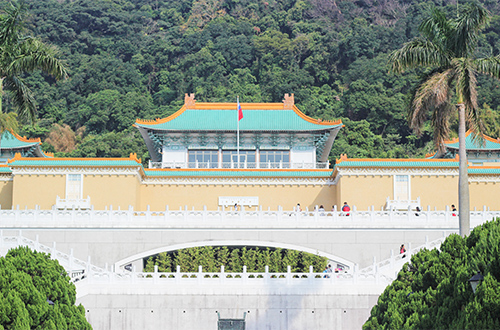
Taipei is home to an unsurpassed collection of Chinese artifacts and artworks, and the museum houses over 700,000 Chinese Imperial artifacts, including ceramics, calligraphy, paintings, religious sculptures, jade carvings, weapons, and the Qing and Ming Dynasties’ furniture. Many among the items were collected by the Chinese emperors themselves. The mass artifacts originally came from the Forbidden City in Beijing, moving to Taiwan along with the Republic of China government during the Chinese Civil War in 1965. Due to the sheer number of the collection, it has been expanded on several occasions.
Location: No. 221, Sec 2, Zhi Shan Road, Shilin District, Taipei City.
Opening Time: 09:00 –17:00 (closed on Mondays)
Why go: Taipei National Museum is not as large as the Forbidden City, visitors can save their energy to admire a lot of delicate treasures.
Recommended Visiting: 2-3 hrs
Photography: photographs and video recordings for private without auxiliary equipment such as flash, light capturing equipment, tripods, and selfie sticks may be taken in exhibition halls. Visitors who want to take photographs and video recording for commercial or other special purpose must file an application in advance.
Top Treasures in the Museum
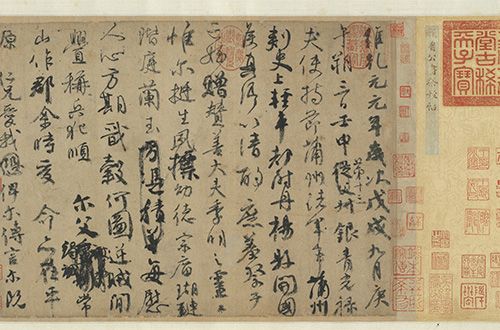
Draft of a Requiem to May Nephew
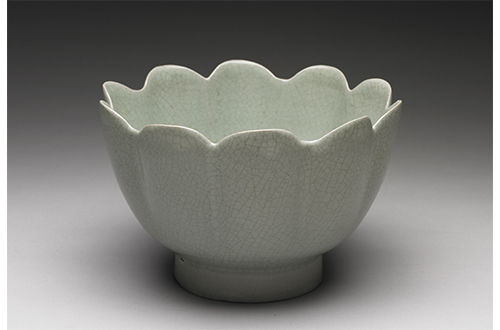
Warming Bowl with Celadon Glaze Ru Ware
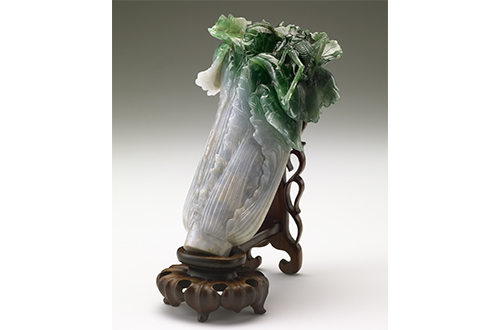
Jadeite Cabbage
Source from Taipei National Palace Museum
Draft of a Requiem to May Nephew
Yan Chen-ching’s calligraphy is famous for his regular script, but “Draft of a Requiem to My Nephew” is in semi-cursive script. This scroll was probably a preliminary draft for a more formal composition. In numerous places it shows crossed out and changed characters. It displays how he composed and edited his writing, providing insight into his ideas as well as his calligraphy.
Warming Bowl with Celadon Glaze Ru Ware
Ru ware is the rarest ceramic in the world, and Taipei National Museum keeps the world’s largest number of Ru ware. This Warming Bowl displays a distinctive lotus-shape and a bluish green color covered with crackles stained brown. In the Song Dynasty, warming bowls and ewers were paired with wine vessels for daily use.
Jadeite Cabbage
Intricately-caved Qing Dynasty (1644-1912CE) Jadeite Cabbage is one of the prize pieces of the National Palace Museum collection. The jade naturally formed the white and green and to be carved into a lifelike cabbage as a wedding gift, as it’s topped by a locust and katydid, traditional symbols of fertility.
Most of the provincial museums in China provide multiple language services, brilliant events and vast permanent collections that you absolutely cannot miss, so what are you waiting for?

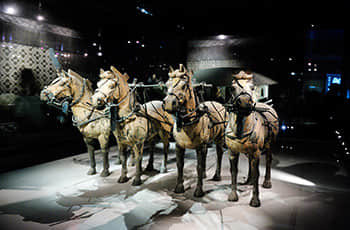 Shaanxi History Museum
Shaanxi History Museum 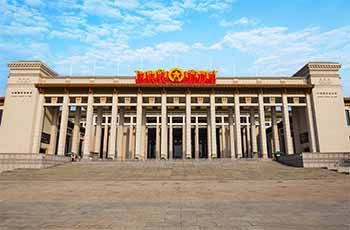 National Museum of China
National Museum of China 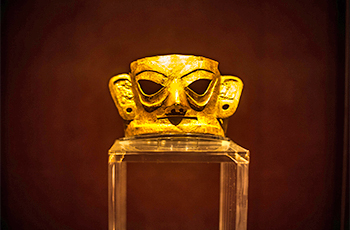 The Sanxingdui Archeological Site and Museum
The Sanxingdui Archeological Site and Museum 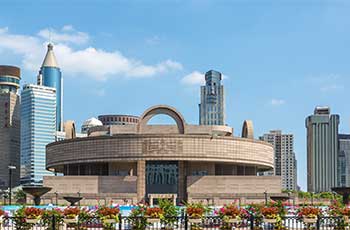 Shanghai Museum
Shanghai Museum